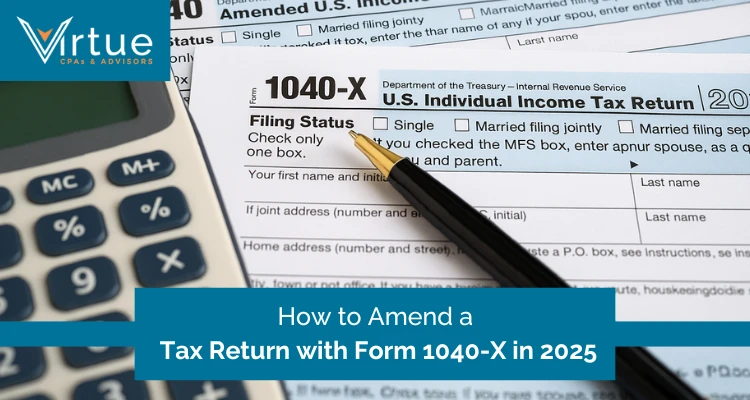Tax refunds for 2025 typically take 21 days for electronic filings and 4-8 weeks for paper returns, but processing delays have become increasingly common due to IRS staffing changes and enhanced fraud prevention measures. Understanding these timelines helps you plan better and avoid unnecessary stress during tax season.
With the 2025 filing season officially underway since January 27, millions of taxpayers are eagerly awaiting their refunds. However, recent changes in IRS operations and new compliance requirements have created uncertainty about when refunds will actually arrive.
This comprehensive guide covers everything you need to know about 2025 refund processing times, common delays, and proven strategies to get your refund faster.
How Long Does Tax Refund Processing Actually Take in 2025?
Electronic filing (e-file) remains the fastest option, with refunds typically issued within 21 days of acceptance. Over 90% of electronically filed returns meet this timeline when no issues arise.
Paper filing takes significantly longer at 4-8 weeks from the date the IRS receives your return. The IRS is currently processing paper returns received in March 2025, showing the substantial backlog that paper filers face.
Factors affecting processing speed:
- Return complexity - Simple returns with standard deductions process faster
- Filing date timing - Early filers (January-February) experience fastest processing
- Special credits - EITC and ACTC cannot be processed before mid-February due to PATH Act requirements
- Refund delivery method - Direct deposit adds 3-5 business days, paper checks require 2-3 weeks
Direct deposit is fastest, typically adding 3-5 business days after IRS approval for funds to appear in your account. Paper checks take longer, requiring approximately 2-3 weeks for mailing and delivery after processing completion.
2025 Refund Schedule with Filing Dates
| If the IRS accepts your return by: | Direct deposit typically arrives within 3 weeks (21 days) from the day your return is accepted: | Your mailed check typically arrives within 2 months (60 days) from the day your return is accepted: |
|---|---|---|
| Jan. 27 | Feb. 17 | Mar. 28 |
| Feb. 10 | Mar. 3 | Apr. 11 |
| Feb. 24 | Mar. 17 | Apr. 25 |
| Mar. 10 | Mar. 31 | May 9 |
| Mar. 24 | Apr. 14 | May 23 |
| Apr. 14 | May 5 | Jun. 13 |
| Apr. 28 | May 19 | Jun. 27 |
| May 12 | Jun. 2 | Jul. 11 |
| May 26 | Jun. 16 | Jul. 25 |
| Jun. 9 | Jun. 30 | Aug. 8 |
| Jun. 23 | Jul. 14 | Aug. 22 |
| Jul. 7 | Jul. 28 | Sept. 5 |
| Jul. 21 | Aug. 11 | Sept. 19 |
Comparison Table: Filing Methods and Refund Speed
| Filing Method | Processing Time | Delivery Method | Total Timeline | Risk Level |
|---|---|---|---|---|
| E-file + Direct Deposit | 21 days | Electronic | 21–24 days | Low |
| E-file + Paper Check | 21 days | 28–35 days | Medium | |
| Paper + Direct Deposit | 4–8 weeks | Electronic | 4–8 weeks | High |
| Paper + Paper Check | 4–8 weeks | 6–10 weeks | Very High |
Ready to get your refund faster? Schedule a consultation with Virtue CPAs today.
What Happens After the E-Filing Process?
Once your return is e-filed:
- Received by IRS – Typically within 24 hours.
- Validation – The IRS checks for basic errors and identity issues.
- Accepted – IRS acknowledges your return was received (see next section).
- Processed – Deeper review, especially if credits like EITC or ACTC are claimed.
- Approved – IRS finalizes your refund amount.
- Refund Sent – Your payment is processed and sent via direct deposit or check.
What "Tax Return Accepted" Really Means?
"Tax Return Accepted" indicates the IRS has successfully received your return, and it has passed initial validation checks. However, this doesn't mean your return is fully processed or your refund is approved.
Acceptance means:
- Your return format is correct
- Basic information matches IRS records
- No obvious errors were detected initially
- Your return entered the processing queue
After acceptance, your return still undergoes detailed review which can reveal issues requiring additional time or taxpayer response.
What Causes Tax Refund Processing Delays in 2025?
Mathematical errors and missing information trigger the most common delays, often extending processing by 2-4 weeks while the IRS manually reviews and corrects issues.
Common delay triggers include:
- Unsigned returns
- Missing Social Security numbers
- Incorrect bank account information for direct deposit
- Mismatched names with IRS records
- Income reporting discrepancies between W-2s/1099s and filed returns
When reported income doesn't match employer-provided W-2s or 1099 forms, the IRS flags return for verification. This review process can extend processing by 45-180 days depending on the complexity of discrepancies.
Additional delay factors:
- EITC and ACTC processing faces mandatory delays until mid-February regardless of filing date
- Identity theft prevention algorithms can delay legitimate returns when fraud detection systems flag potential issues
- Peak season bottlenecks occur mid-March through April when filing volume strains IRS processing capacity
How Do I Track My 2025 Tax Refund Status?
The "Where's My Refund?" tool on IRS.gov provides the most reliable status updates, available 24/7 with daily updates typically occurring overnight.
To use the tool, you need:
- Your Social Security number
- Filing status
- Exact refund amount
Understanding status messages:
- "Return Received" - Your return has been accepted and entered into IRS processing systems
- "Refund Approved" - The IRS has completed processing and approved your refund amount
- "Refund Sent" - Your refund has been transmitted to your bank or mailed as a check
When to contact the IRS:
- 21+ days have passed since e-filing without status updates
- 6+ weeks have passed since mailing paper return
- Where's My Refund? instructs you to call
- You receive an IRS notice or letter requiring response
State Tax Refund Processing: What's Different?
State tax refunds operate independently from federal refunds and often have different processing times and requirements. Understanding these differences helps avoid confusion when refunds arrive at different times.
State processing variations:
- Georgia state refunds typically process within 3-4 weeks for e-filed returns
- State refund timing doesn't depend on federal refund status
- Some states process faster than the IRS, while others take longer
- State-specific requirements may cause additional delays
Major state considerations:
- Different filing deadlines - Some states extend beyond April 15
- Separate tracking systems - Use your state's "Where's My Refund" tool
- State-specific credits may require additional processing time
- Local tax obligations can offset state refunds
Maintaining accurate books throughout the year is crucial for a hassle-free tax season. Our month-end close process checklist can help you stay organized and prepared. .
What Strategies Help Get Your Refund Faster?
Early filing provides the clearest advantage for faster processing, with January and February filers typically receiving refunds 1-2 weeks sooner than peak-season filers.
Pre-filing preparation checklist:
- Gather all W-2s and 1099 forms
- Collect prior year tax returns for reference
- Update bank account information for direct deposit
- Organize deduction documentation
Filing optimization strategies:
- Choose authorized e-file providers for fastest transmission to IRS systems
- Ensure bank account accuracy - use checking accounts rather than savings
- Double-check Social Security numbers match exactly with IRS records
- Use professional preparation for complex situations
Professional advantages include:
- Advanced software with built-in error checking
- Current tax law compliance verification
- Expertise for self-employed individuals and business owners
- Quality control processes that catch common errors
Avoid common delays - Call Virtue CPAs at (678) 952-9001 to ensure error-free filing.
IRS Scam Warning: Stay Protected During Tax Season
Tax season brings increased scammer activity targeting taxpayers expecting refunds. Knowing how to identify and avoid these scams protects your personal information and money.
Common IRS scam tactics:
- Fake refund calls claiming you're owed additional money
- Phishing emails requesting personal information to "process your refund"
- Text message scams asking for bank account details
- Fake IRS websites designed to steal login credentials
How to identify legitimate IRS communication:
- The IRS never initiates contact via phone, email, or text about refunds
- Official IRS letters arrive by U.S. mail only
- IRS.gov is the only official website for refund information
- Refund status changes only appear on the official Where's My Refund tool
Red flags to watch for:
- Requests for immediate payment via gift cards or wire transfers
- Threats of arrest or legal action for unpaid taxes
- Demands for personal information via phone or email
- Promises of larger refunds for a fee
If you encounter a scam:
- Don't provide any personal information
- Hang up immediately on suspicious phone calls
- Report scams to the IRS at irs.gov/scam
What Should I Do If My Refund Is Delayed?
First, verify your return falls outside normal processing windows before taking action. Electronic returns warrant concern after 21 days, while paper returns require 6-8 weeks for normal processing.
Initial steps for delayed refunds:
- Check Where's My Refund? regularly for status updates
- Verify you're outside normal processing timeframes
- Look for any IRS correspondence in mail
Common resolution scenarios:
- Mathematical corrections - IRS finds and corrects calculation errors automatically (adds 2-4 weeks)
- Income verification - Mismatched reporting requires additional documentation
- Identity verification - Takes 6-9 weeks when fraud protection measures flag returns
Professional intervention benefits:
- Specialized phone lines with shorter wait times
- Direct access to processing departments
- Documentation support for verification requirements
- Appeal and amendment services for IRS errors
How Do Different Taxpayer Types Face Unique Processing Challenges?
Business owners and self-employed individuals encounter additional scrutiny due to Schedule C complexities and business deduction verification requirements.
Challenges by taxpayer type:
- Self-employed - Enhanced verification processes for business income and expenses
- Families with children - Child Tax Credit verification and custody arrangement documentation
- High-income taxpayers - AMT calculations require manual review
- First-time filers - Lack previous year references for IRS verification systems
Industry expertise: Virtue CPAs specializes in complex tax situations across multiple taxpayer categories through our Trust & Estate Planning and Transaction Advisory services.
For professionals in the healthcare industry, such as dentists, there are unique tax considerations to keep in mind. You can learn more in our dental accounting guide.
Expert Tips to Optimize Your 2025 Refund Experience
Year-round preparation strategies:
- Maintain organized records throughout the year
- Use digital storage solutions for easy document retrieval
- Review tax withholdings annually to balance refund timing with cash flow
- Consider quarterly estimated payments for self-employed taxpayers
Technology advantages:
- Professional-grade tax software provides real-time error checking
- Direct communication channels with your CPA ensure immediate responses
- Georgia-specific considerations optimize both federal and state refund timing
Virtue CPAs expertise includes:
- 25+ years of combined team experience
- Over 1,000 successful client projects
- Multi-industry expertise across real estate, construction, healthcare, and technology
- Strategic planning integration through Succession Planning and Entity Formation services
Accelerate your refund - Contact Virtue CPAs for expert preparation services.
Key Takeaways for 2025 Tax Refund Processing
Understanding 2025 tax refund processing times empowers better financial planning and realistic expectation setting. Electronic filing with direct deposit remains the fastest option, while paper filing significantly extends wait times.
Fastest refund strategies:
- File electronically early in the season
- Choose direct deposit over paper checks
- Use professional preparation to minimize errors
- Avoid peak season filing (mid-March to April 15)
Professional expertise provides measurable advantages through error reduction, authorized e-file status, and proactive issue resolution when problems arise.





